Backpacking the Arizona Trail: Passage 36, Coconino Rim
AZT Day 17
(Trans-Arizona/Utah Hike Day 24)
Welcome back to Aspen’s Tracks, thruhiking the Arizona Trail southbound from Utah to Mexico. Today’s route covers backpacking the stretch of Passage 36, the Coconino Rim, between my camp on the passage on the Coconino Rim within the Kaibab National Forest to my camp on the passage at the Moqui Stage Station just north of the passage boundary. You can find today’s hiking logistics below the photo documentation and trail journal of the route.
In the land of Arizona
Through desert heat or snow
Winds a trail for folks to follow
From Utah to Old Mexico
It’s the Arizona Trail
A pathway through the great Southwest
A diverse track through wood and stone
Your spirit it will test
Oh, sure you’ll sweat and blister
You’ll feel the miles every day
You’ll shiver at the loneliness
Your feet and seat will pay
But you’ll see moonlight on the borderlands
You’ll see stars on the Mogollon
You’ll feel the warmth of winter sun
And be thrilled straight through to bone
The aches and pains will fade away
You’ll feel renewed and whole
You’ll never be the same again
With Arizona in your soul
Along the Arizona Trail
A reverence and peace you’ll know
Through deserts, canyons, and mountains
From Utah to Old Mexico
-“The Arizona Trail,” Dale R. Shewalter
Arizona Trail: Coconino Rim Campsite to Russell Tank
Today began with a continuation of the southward trek along the Coconino Rim. The rolling hike along the rim of the Coconino Plateau passes through a combination of ponderosas and, through the trees, views off the plateau toward the Navajo Nation. As the trail rises slowly back to the top of the rim and heads back across the Plateau, the ecosystem starts to shift. Junipers start to appear.
The trail passes Russell Tank, one of the many wildlife tanks maintained by the state to provide water to wildlife. It’s the first time on the hike that I’ve had to filter water out of a tank, and the tank is low after the dry summer, but there is enough to pull but the water is decent quality, so I set up my Sawyer and get a few liters to get me to the Babbitt Ranch passage.
One disturbing thing happens, though. As I step in the mud on the edge of the tank to suck some water into my filter bag, I feel a tug on the sole of my right hiking boot. Looking down, I see the sole of my boot start to separate from the body.
It’s going to be a race to Flagstaff now. Hopefully I can get there and get a new pair before my sole comes off.
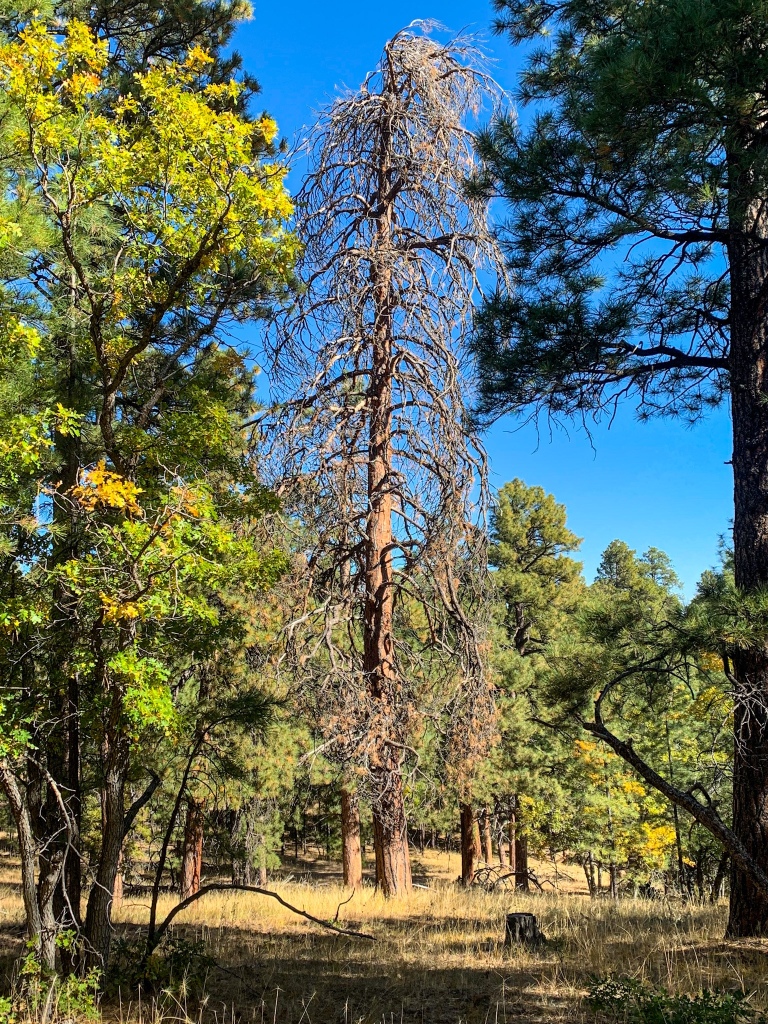
Arizona Trail, Passage 36 (Coconino Rim)
Kaibab National Forest
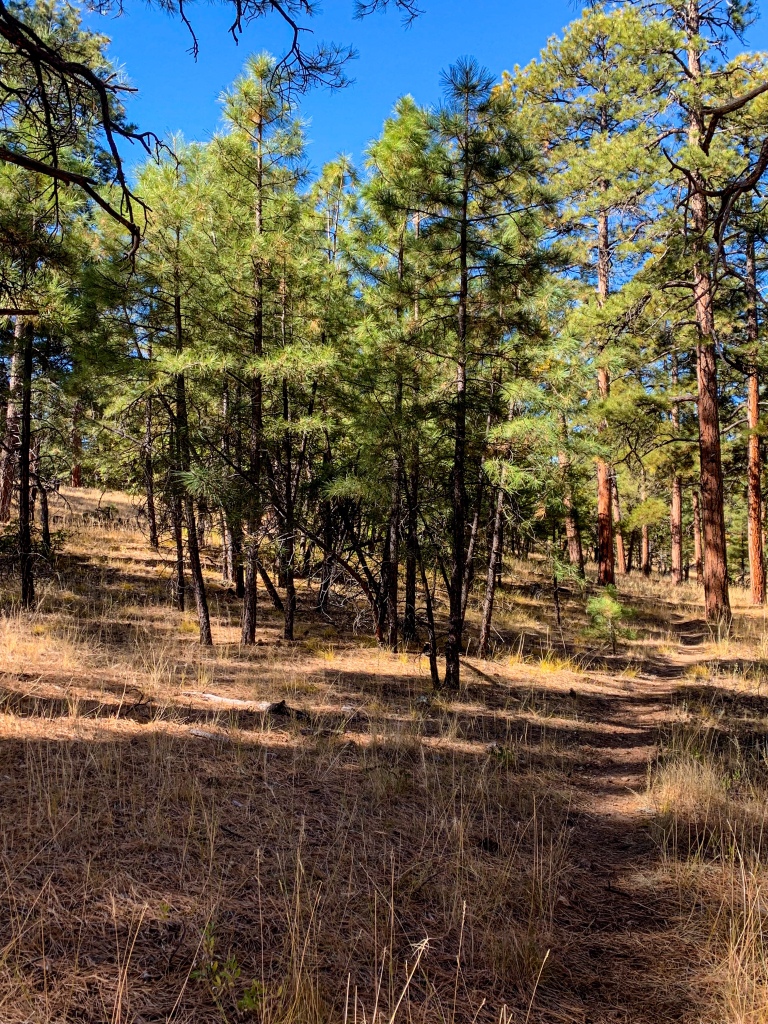
Arizona Trail, Passage 36 (Coconino Rim)
Kaibab National Forest
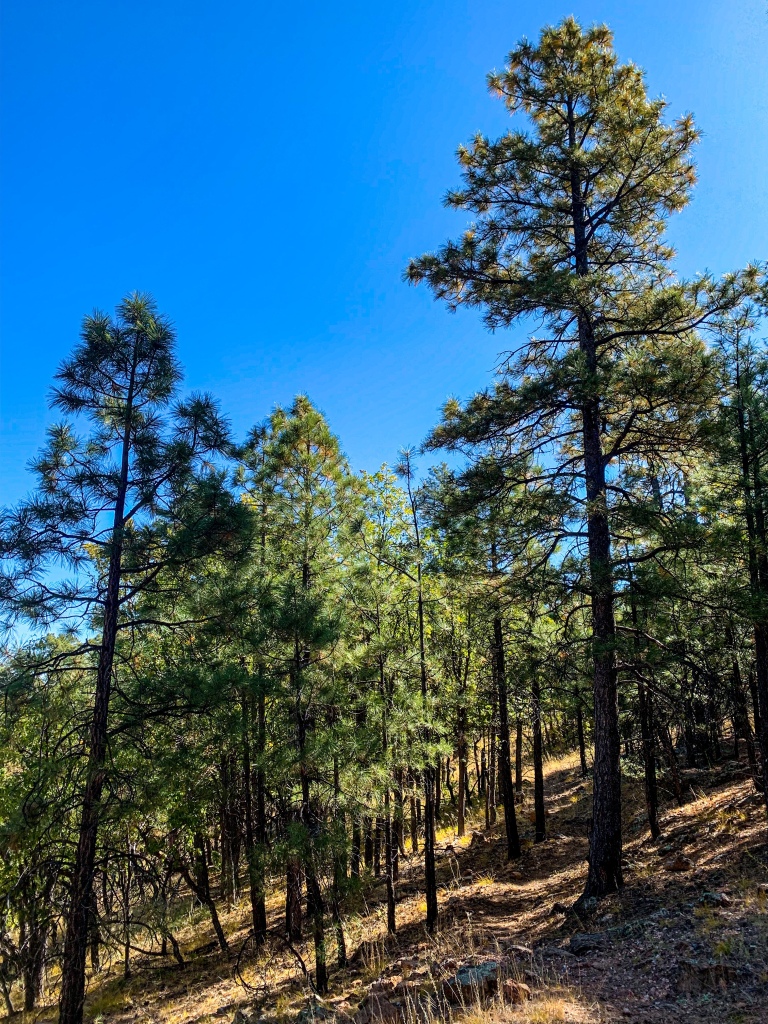
Arizona Trail, Passage 36 (Coconino Rim)
Kaibab National Forest
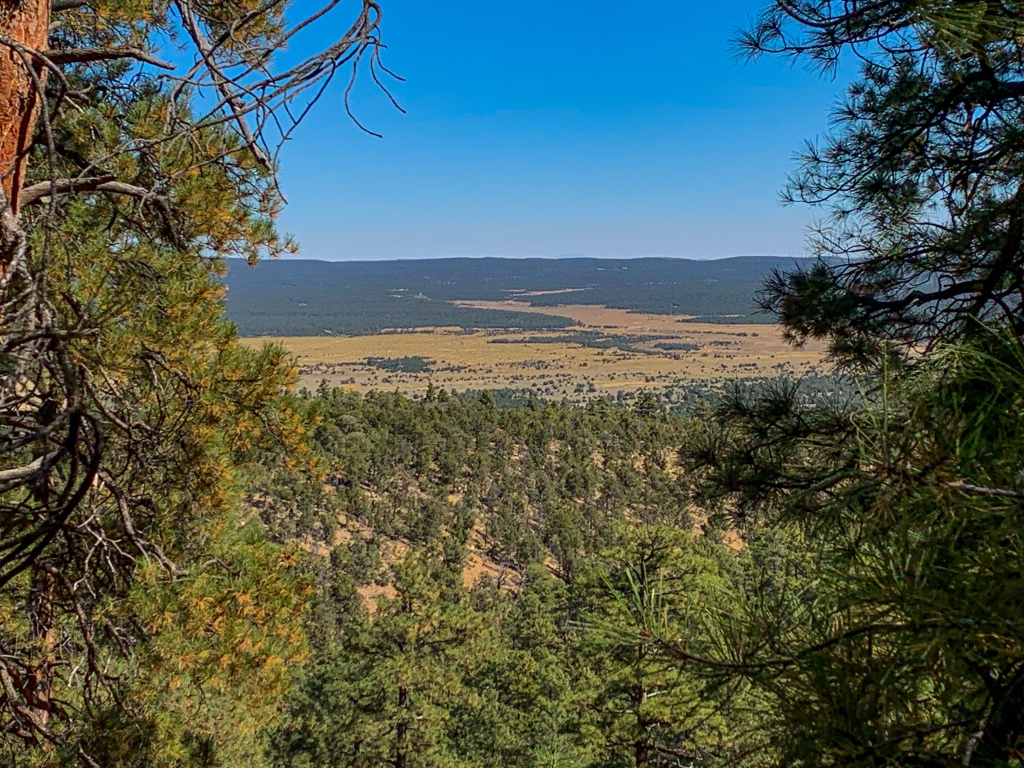
Arizona Trail, Passage 36 (Coconino Rim)
Kaibab National Forest

Arizona Trail, Passage 36 (Coconino Rim)
Kaibab National Forest

Arizona Trail, Passage 36 (Coconino Rim)
Kaibab National Forest

Arizona Trail, Passage 36 (Coconino Rim)
Kaibab National Forest

Arizona Trail, Passage 36 (Coconino Rim)
Kaibab National Forest

Arizona Trail, Passage 36 (Coconino Rim)
Kaibab National Forest
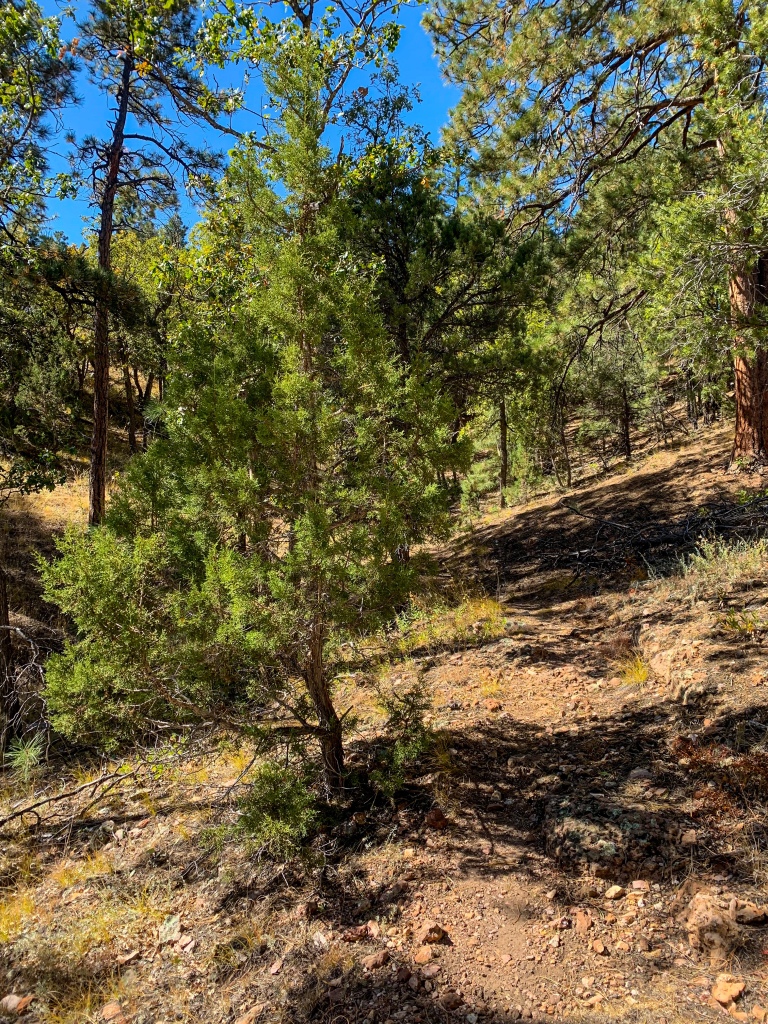
AZT Passage 36 (Coconino Rim)
Kaibab National Forest
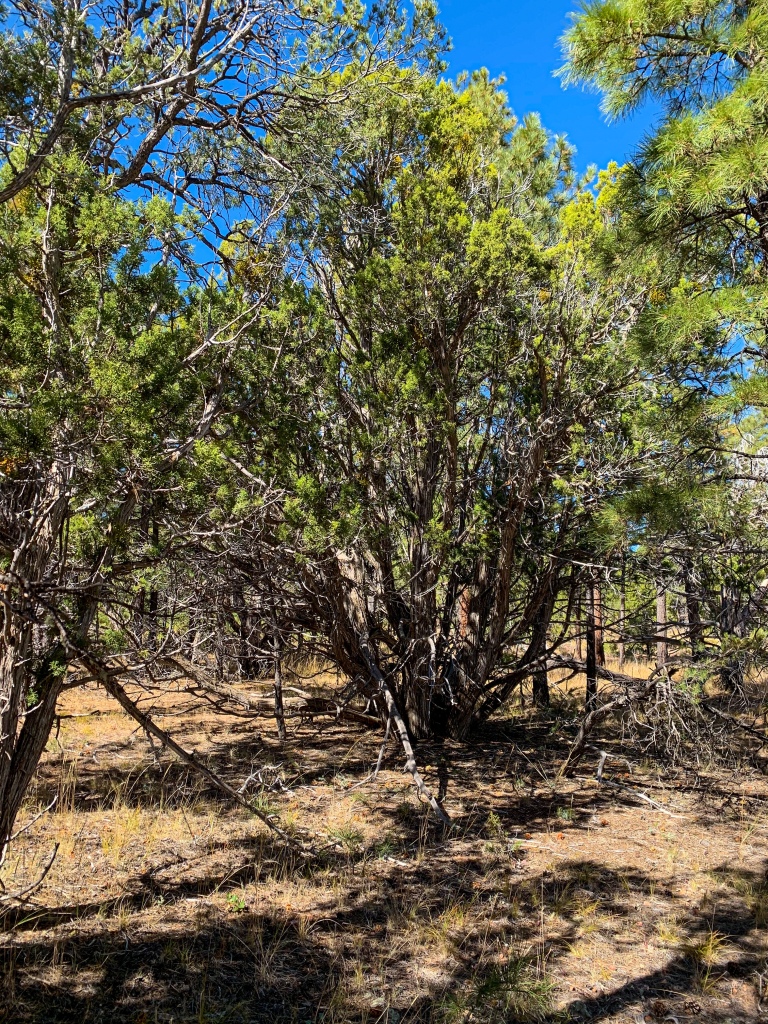
AZT, Passage 36 (Coconino Rim)
Kaibab National Forest
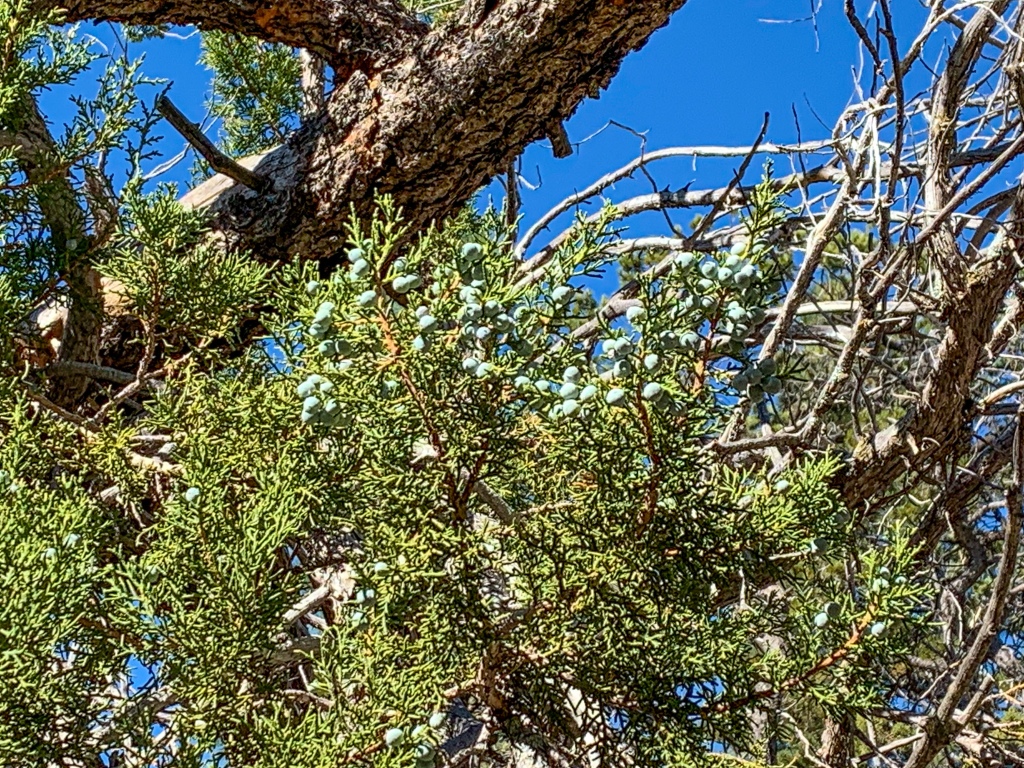
(Note: Juniper “berries” are not true berries, but rather a type of cone with merged, fleshy scales, making it appear like a berry.)
Arizona Trail, Passage 36 (Coconino Rim)
Kaibab National Forest
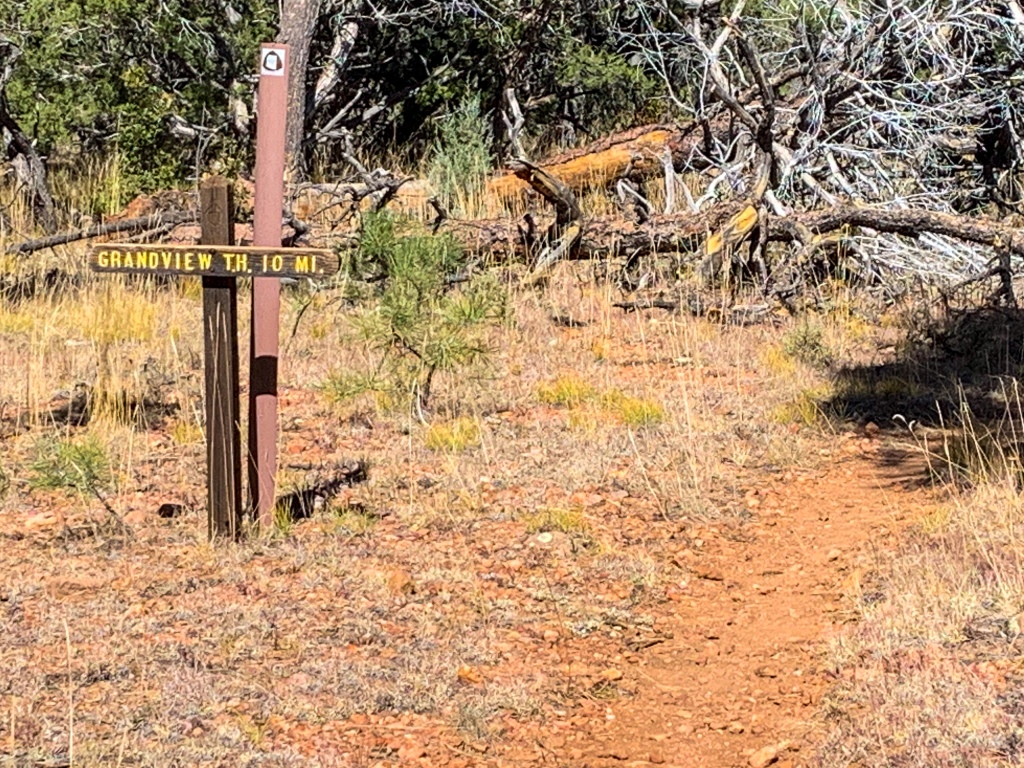
Arizona Trail, Passage 36 (Coconino Rim)
Kaibab National Forest
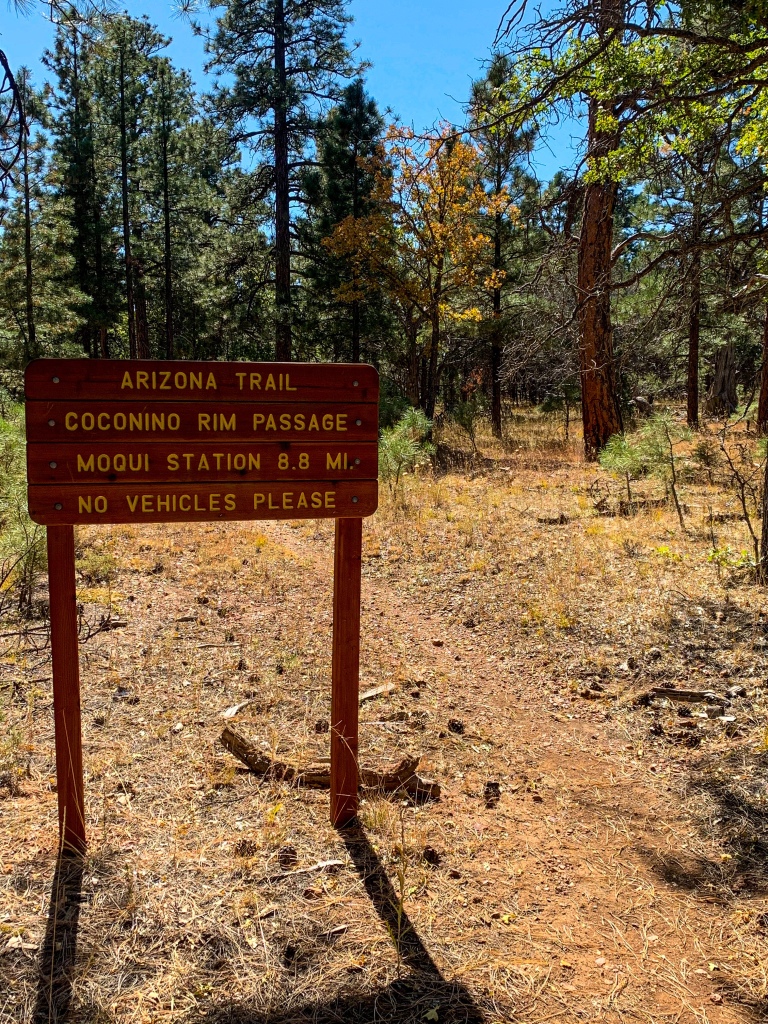
AZT, Passage 36 (Coconino Rim)
Kaibab National Forest
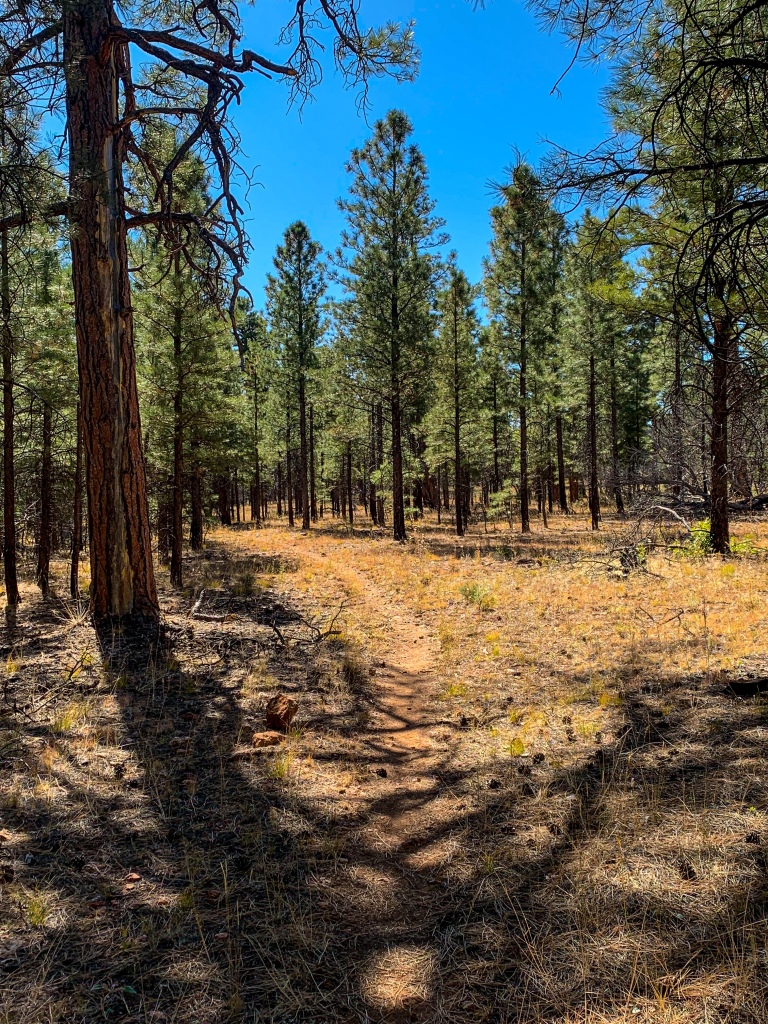
Arizona Trail, Passage 36 (Coconino Rim)
Kaibab National Forest
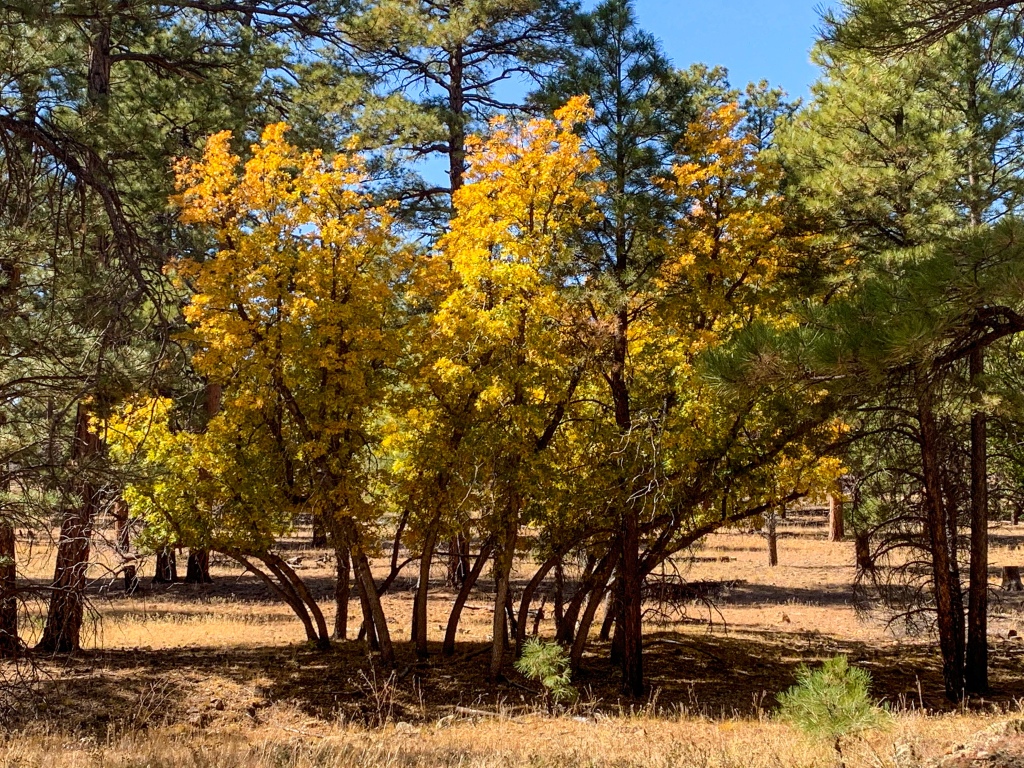
Arizona Trail, Passage 36 (Coconino Rim)
Kaibab National Forest
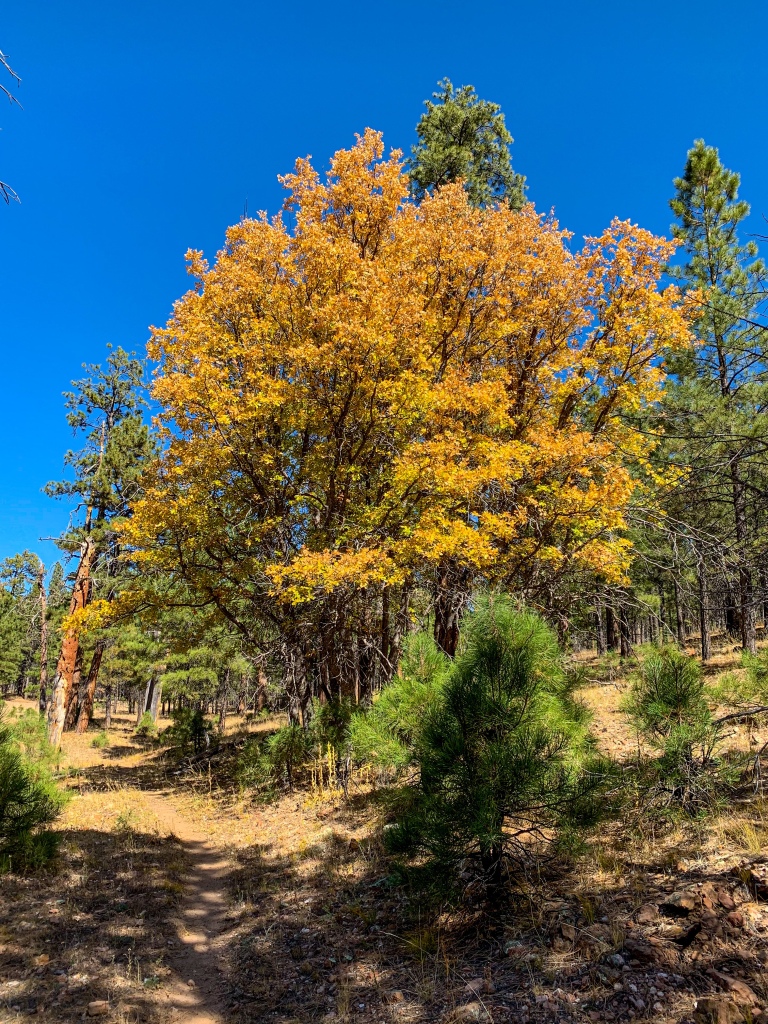
Arizona Trail, Passage 36 (Coconino Rim)
Kaibab National Forest
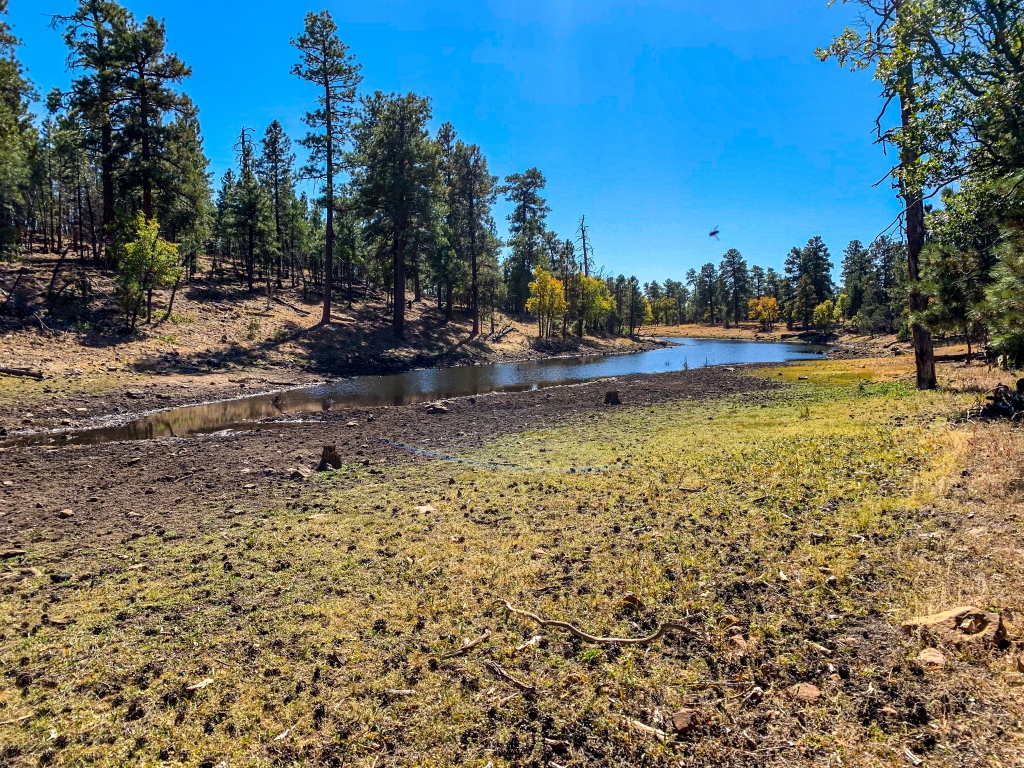
One of the first water sources along the trail that actually had water. Filled up here for the trek south.
Arizona Trail, Passage 36 (Coconino Rim)
Kaibab National Forest
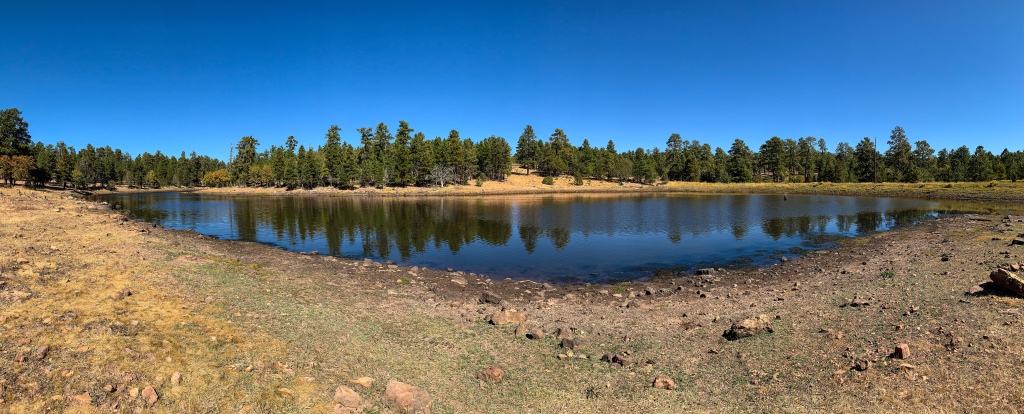
One of the first water sources along the trail that actually had water. Filled up here for the trek south.
Arizona Trail, Passage 36 (Coconino Rim)
Kaibab National Forest
Arizona Trail: Russell Tank to Moqui Stage Station
After filtering the water of organisms and sediment (this IS Arizona, after all, one can’t be picky, but the Sawyer works great for filtering all that out), I’m heading south again. The ecotone is definitely getting into gear now. The pines start to thin out; more rice grass appears between them. Pinyon pines appear, joining the juniper that had appeared earlier. Moving farther from the rim, the ecosystem change is finalized. The ponderosas disappear completely, becoming replaced by pinyon pines and juniper spaced by rice grass meadows. Humphreys Peak and the San Francisco Peaks appear above the treeline. In a few days, I will be at their foot.
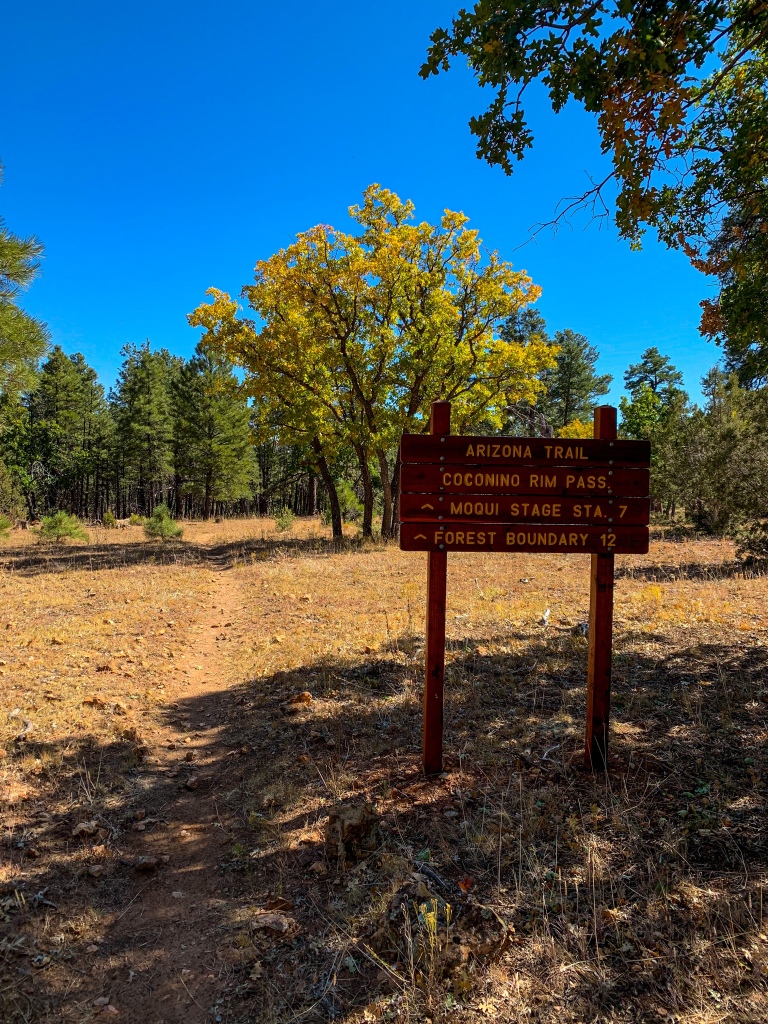
7 miles from Moqui Stage Station, 12 from the forest boundary.
Arizona Trail, Passage 36 (Coconino Rim)
Kaibab National Forest
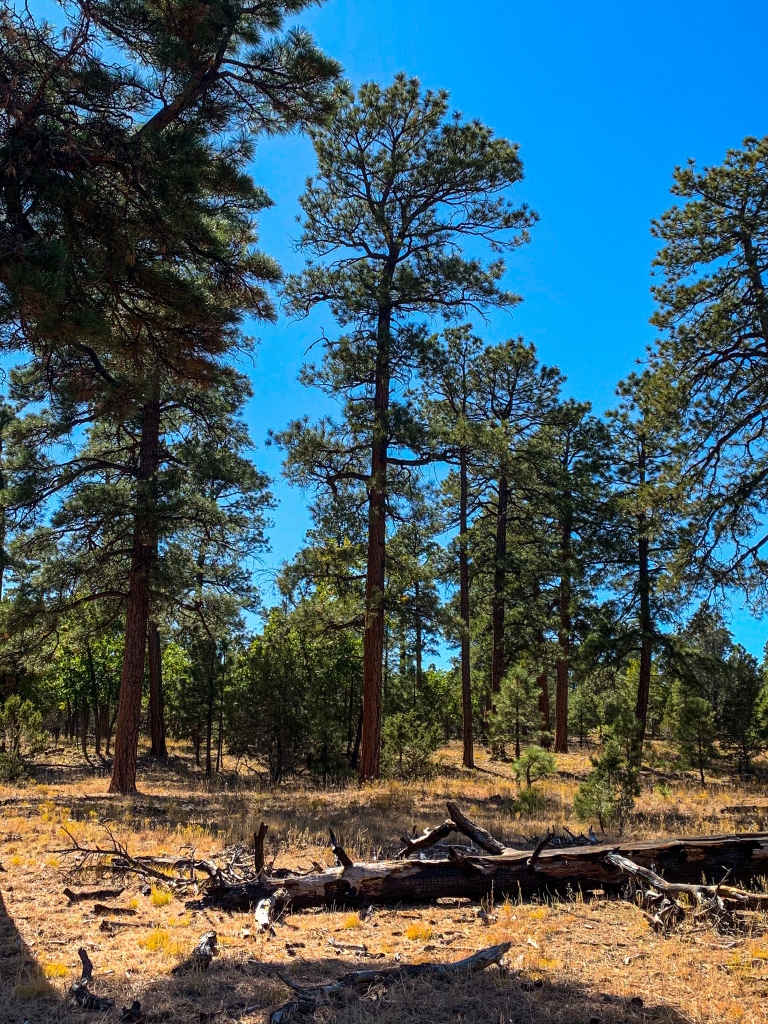
Arizona Trail, Passage 36 (Coconino Rim)
Kaibab National Forest
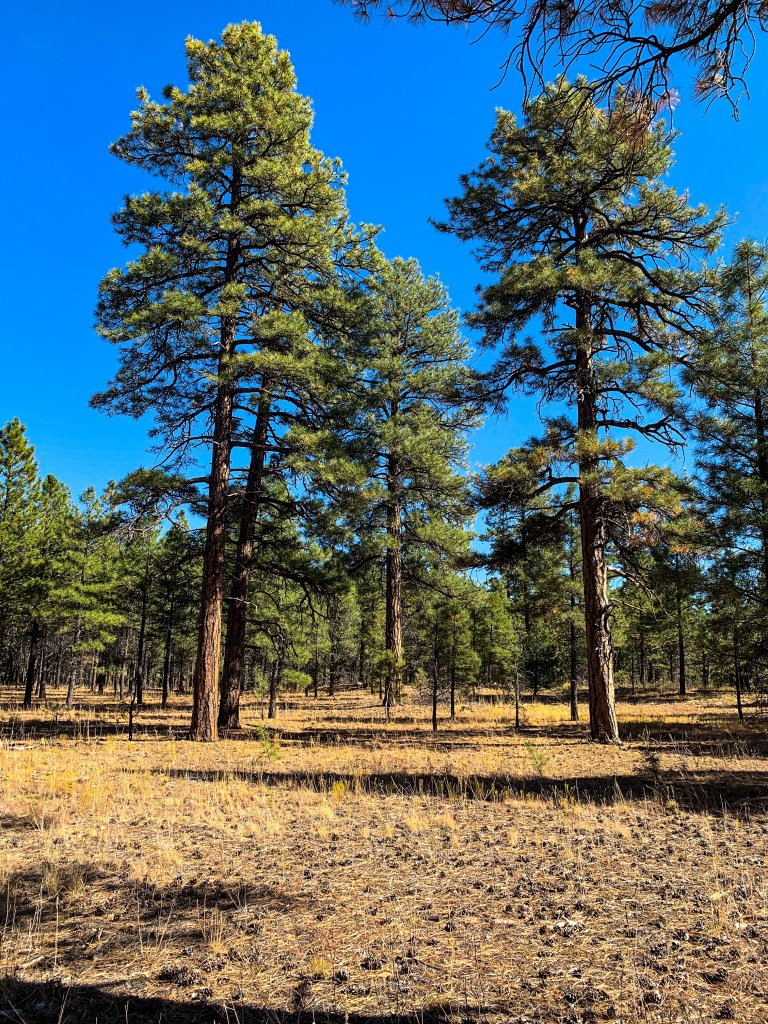
Arizona Trail, Passage 36 (Coconino Rim)
Kaibab National Forest
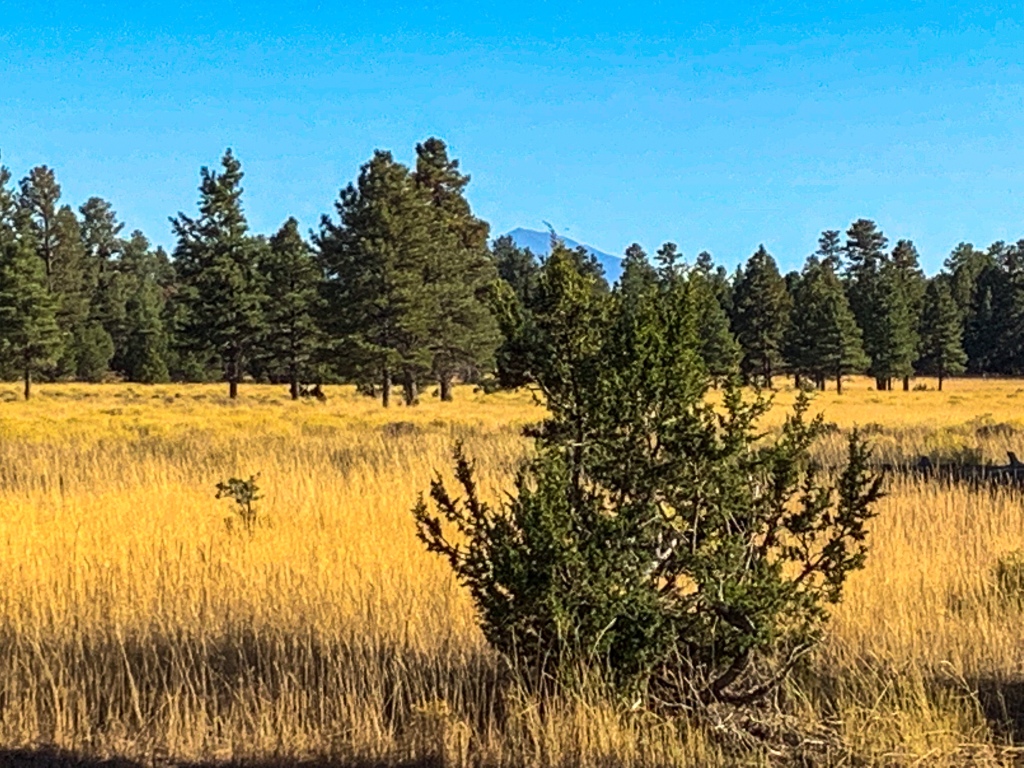
AZT Passage 36 (Coconino Rim)
Kaibab National Forest
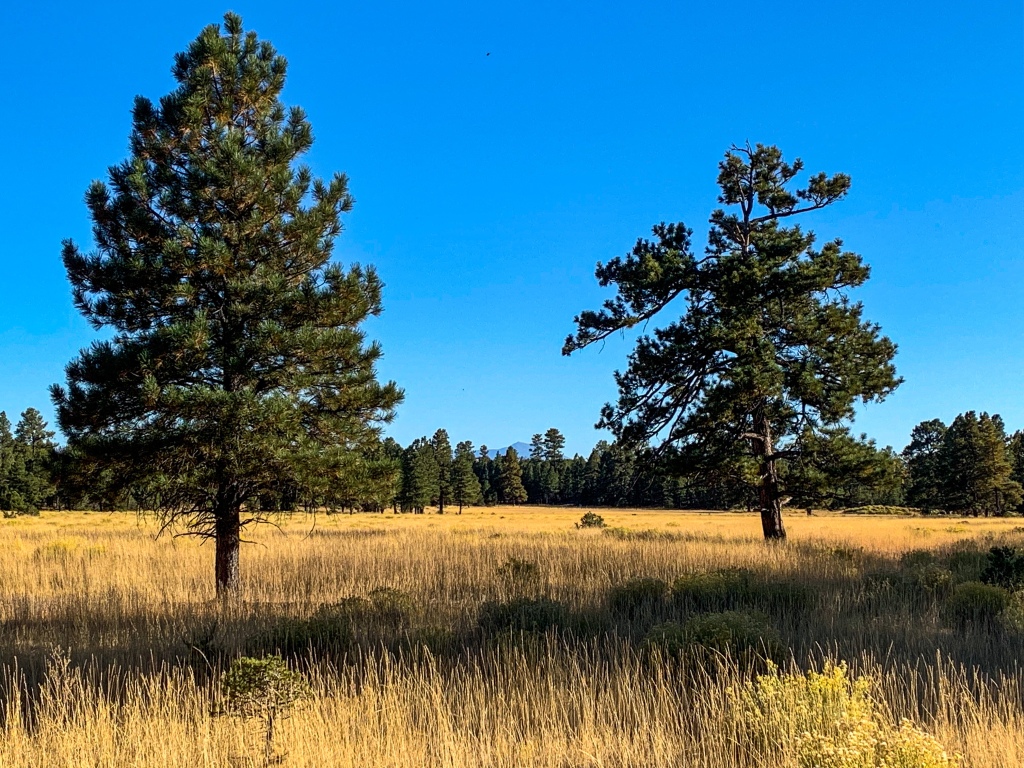
Kaibab National Forest
San Francisco Peaks behind over the treeline.

Kaibab National Forest
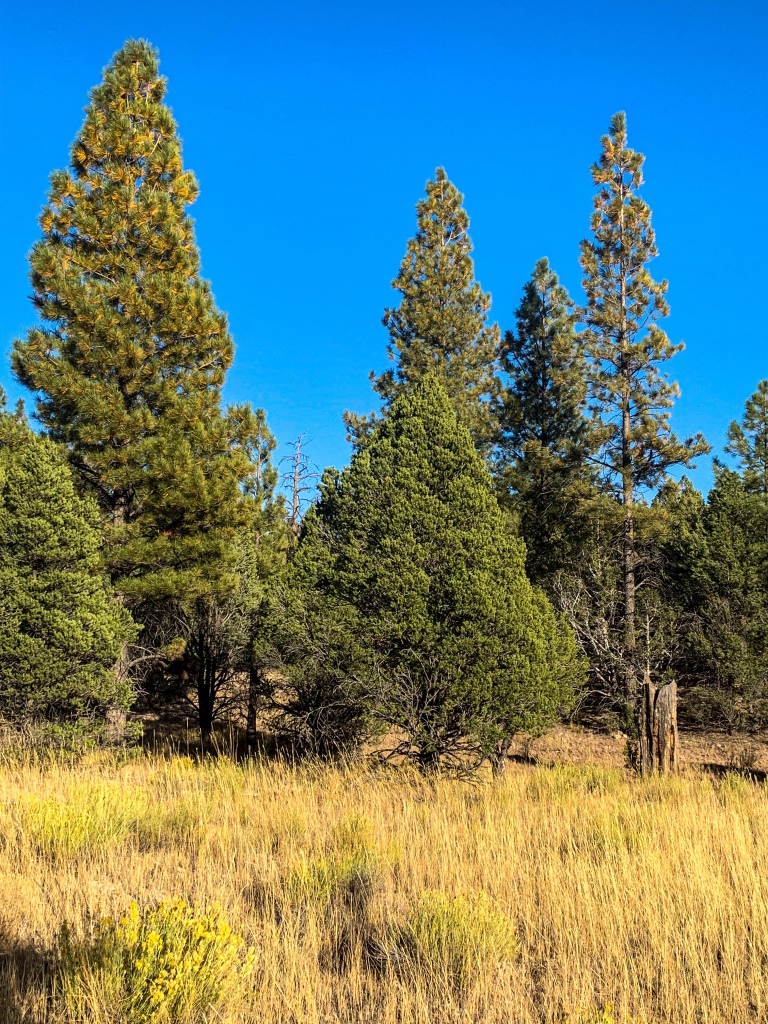
Arizona Trail Passage 36 (Coconino Rim)
Kaibab National Forest
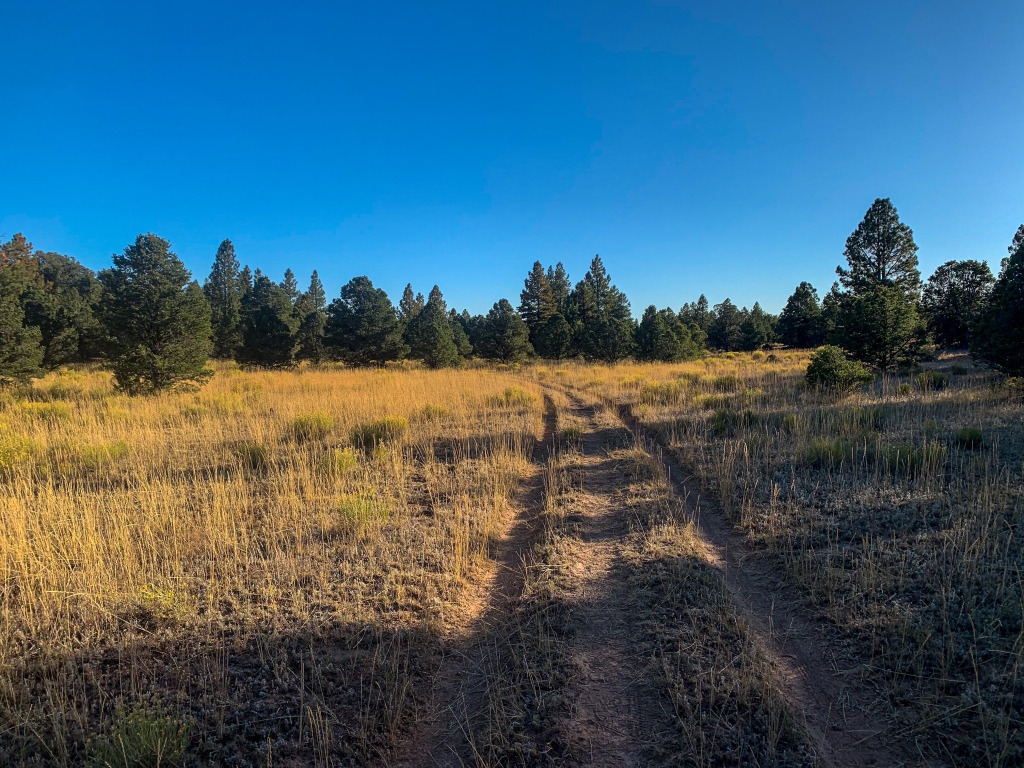
Kaibab National Forest
Pines getting more spread out, transitioning to more junipers moving away from the rim.
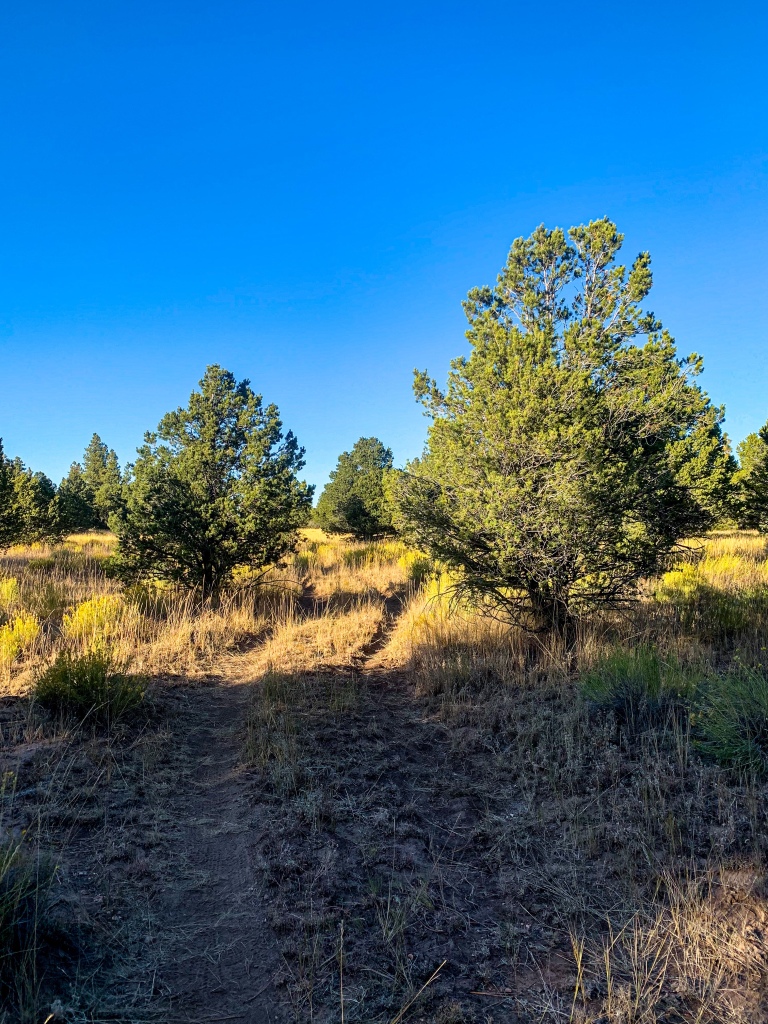
AZT Passage 36 (Coconino Rim)
Kaibab National Forest
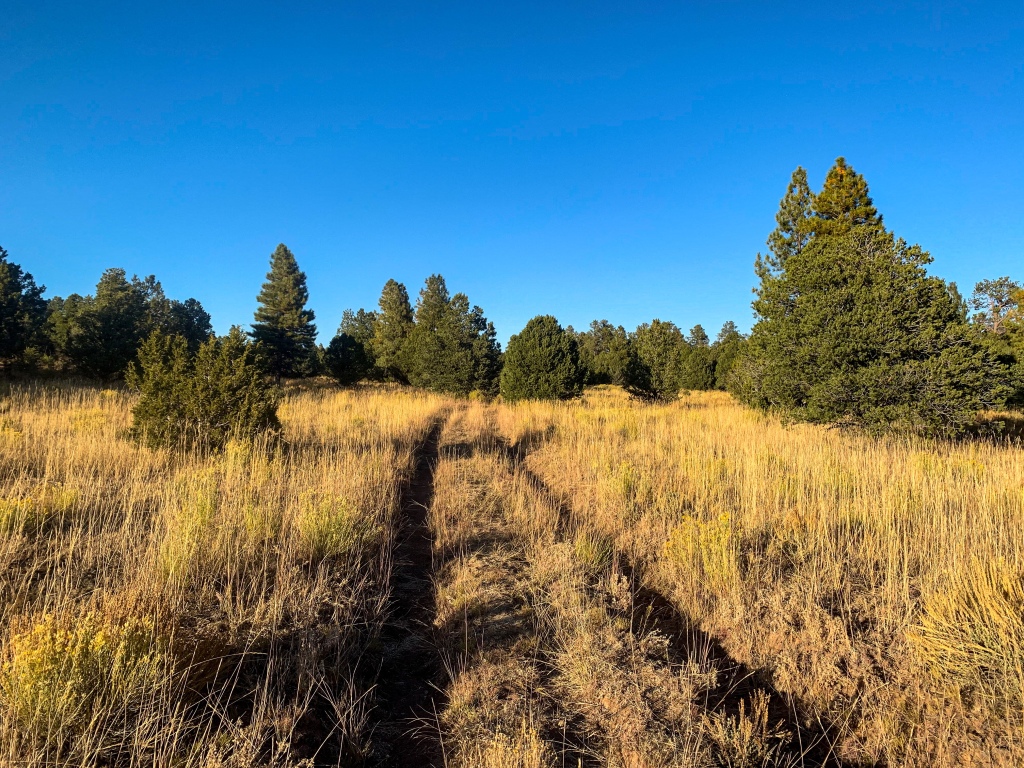
AZT Passage 36 (Coconino Rim)
Kaibab National Forest
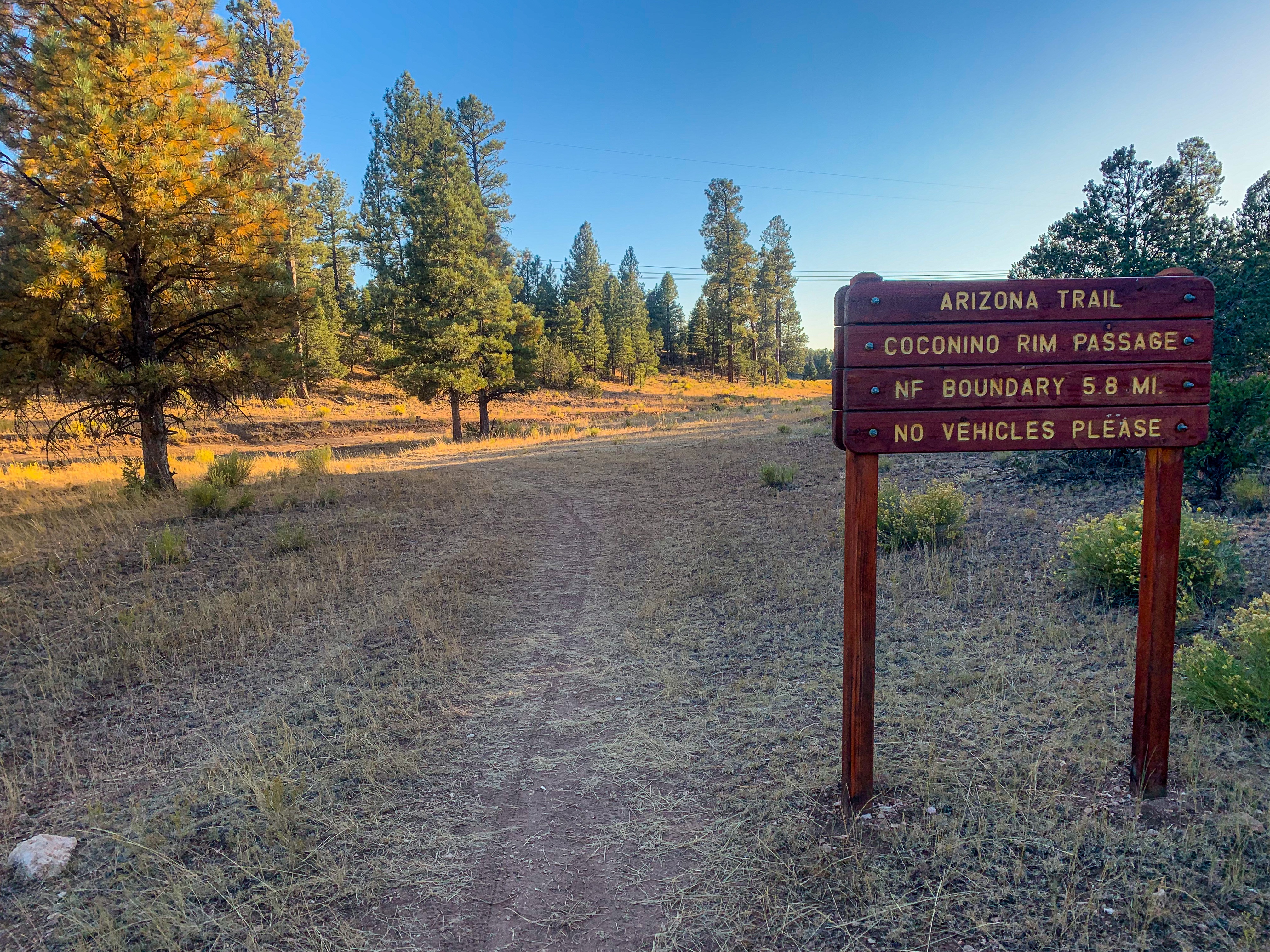
Kaibab National Forest
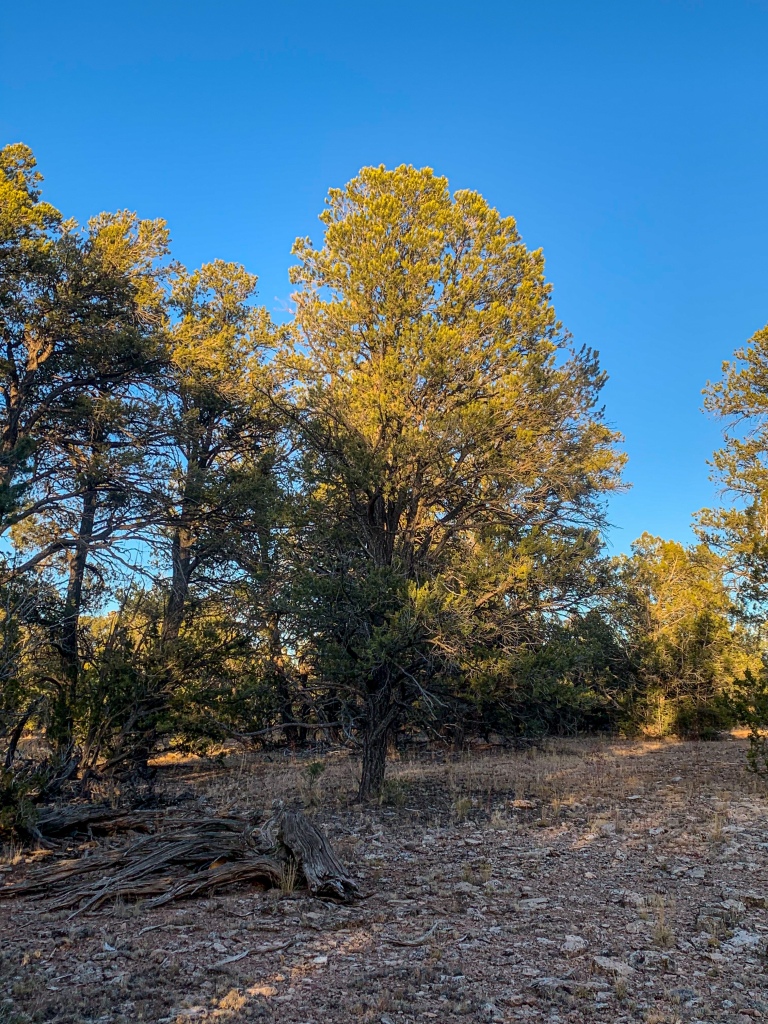
Arizona Trail Passage 36 (Coconino Rim)
Kaibab National Forest
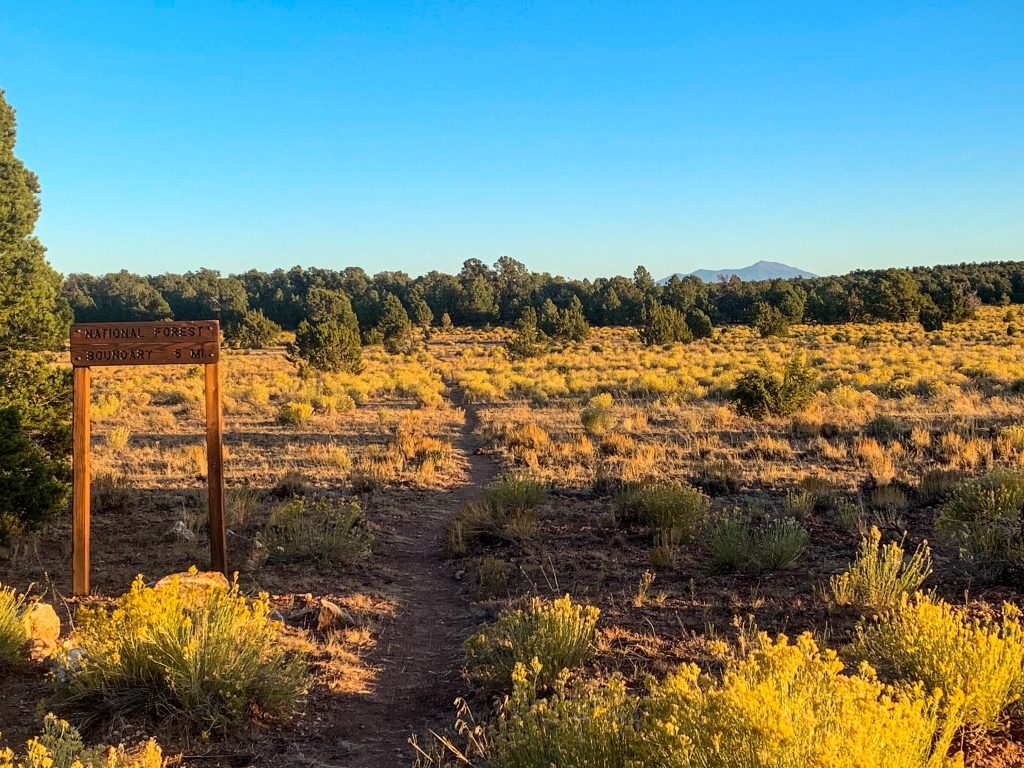
Moqui Stage Station
Arizona Trail Passage 36 (Coconino Rim)
Kaibab National Forest
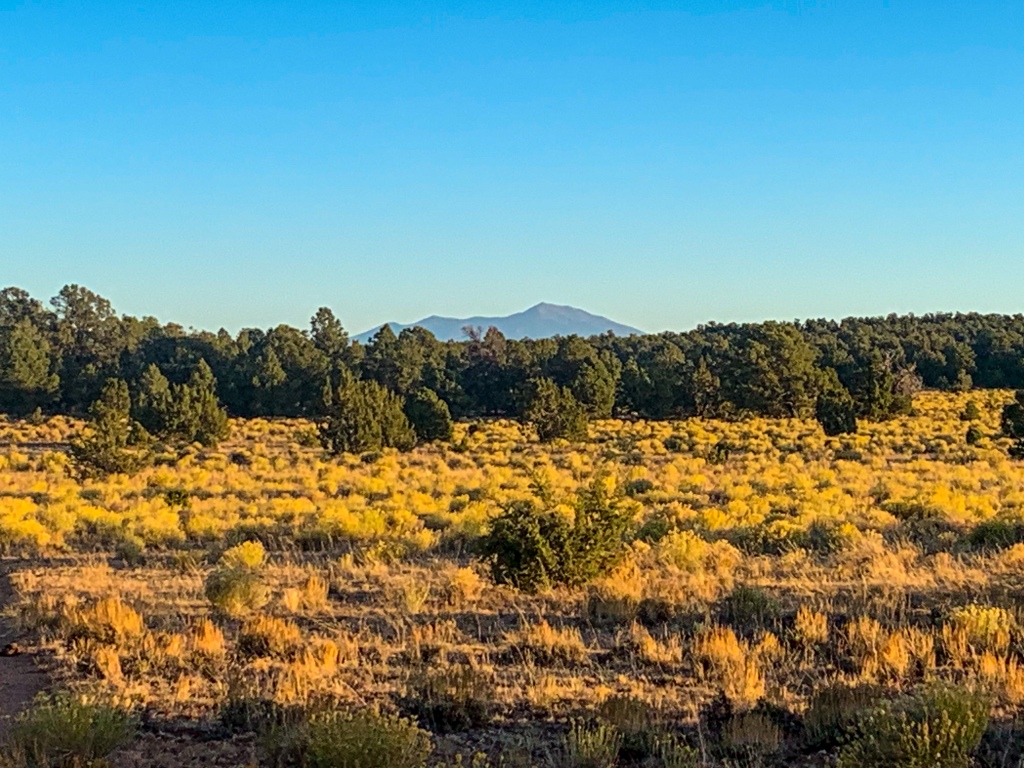
Moqui Stage Station
Arizona Trail Passage 36 (Coconino Rim)
Kaibab National Forest
Moqui Stage Station
The day ends at the ruins of Moqui Stage Station, one of the stops on the original stagecoach route that took early tourists from Flagstaff to Grand Canyon. Stone ruins and an interpretive sign mark the site today – the main one being what could have been perhaps a water tank for horses at one point.
Setting up camp, I get a spectacular view of the full moon rising through the umbra (the shadow of the Earth) and the Belt of Venus. Just gorgeous to sit and watch that happen…with no one for miles around.
(Post will be updated with my Relieve video for today.)
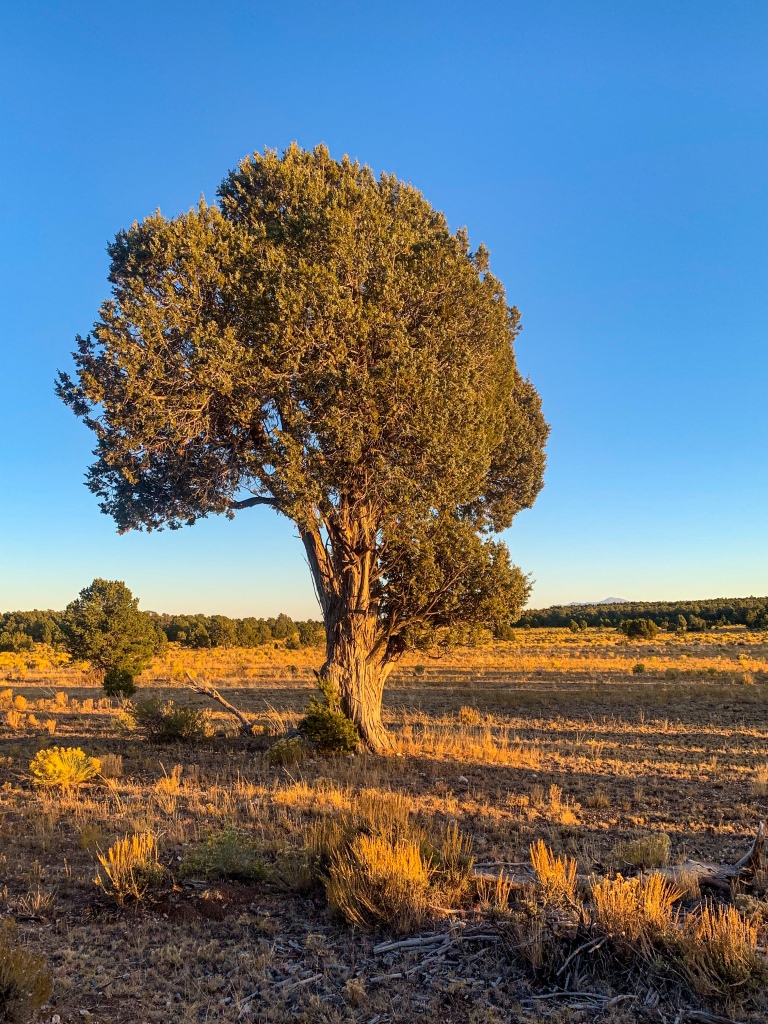
Moqui Stage Station
Arizona Trail Passage 36 (Coconino Rim)
Kaibab National Forest
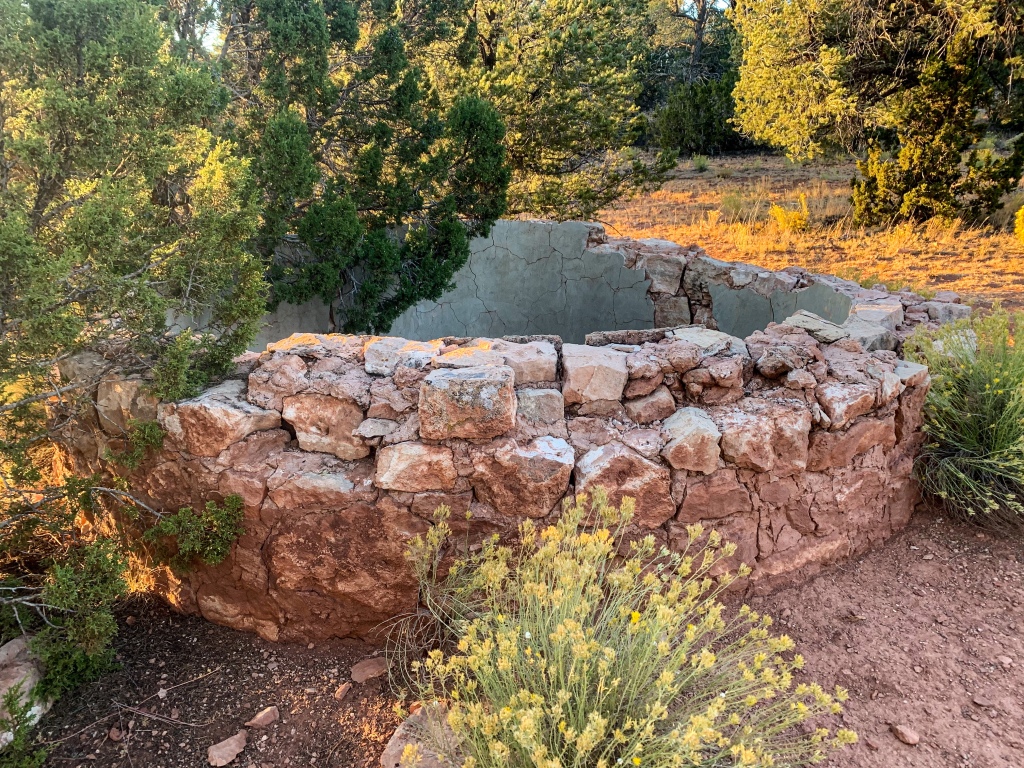
Arizona Trail Passage 36 (Coconino Rim)
Kaibab National Forest
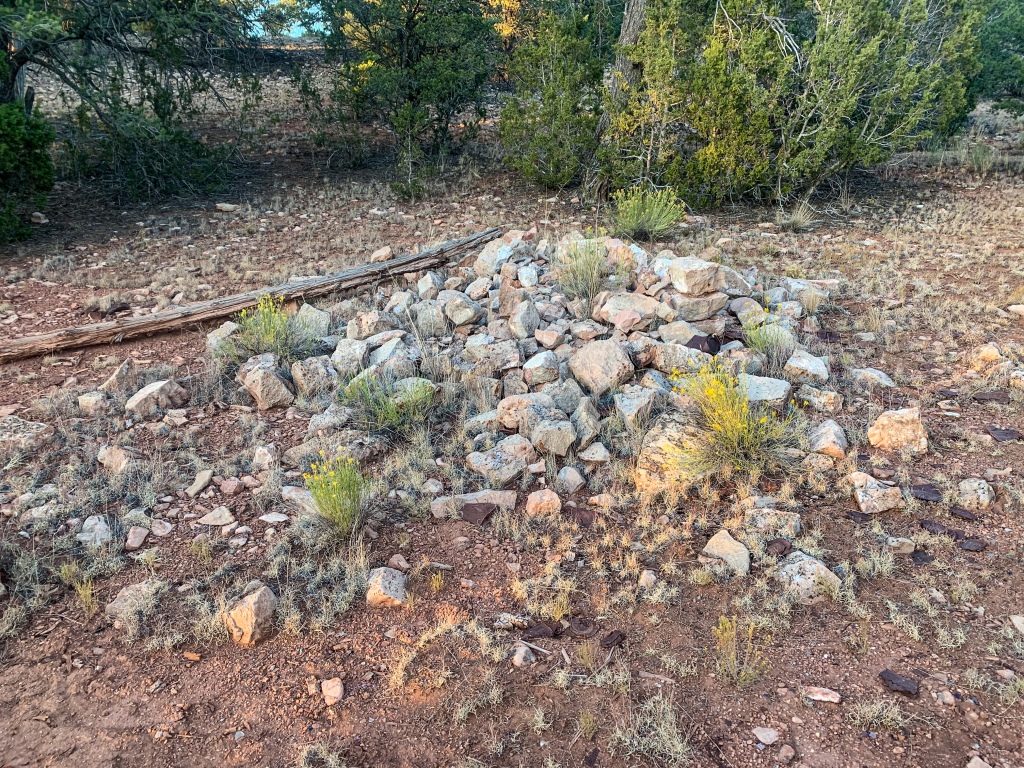
Arizona Trail Passage 36 (Coconino Rim)
Kaibab National Forest
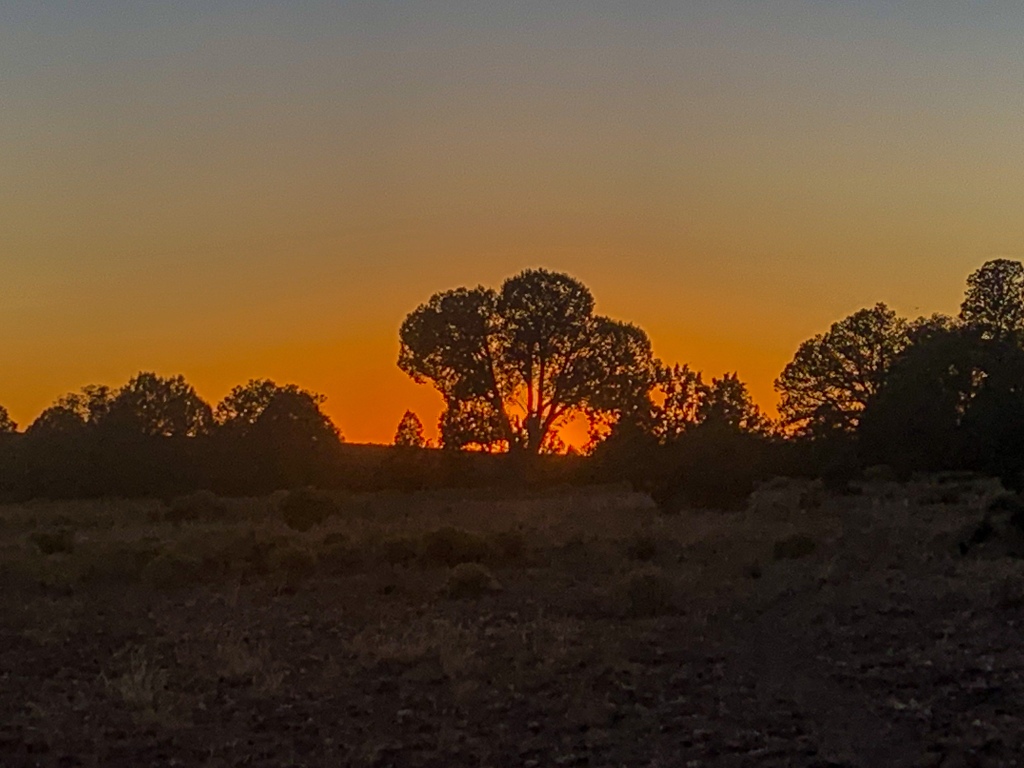
Arizona Trail Passage 36 (Coconino Rim)
Kaibab National Forest
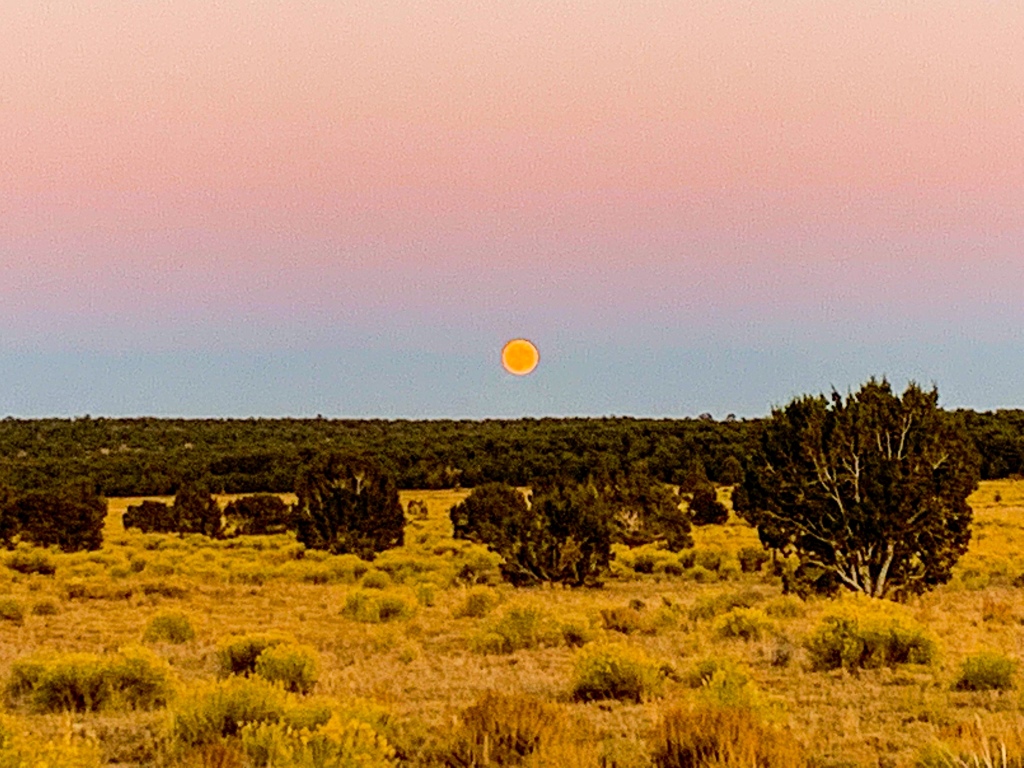
Arizona Trail, Passage 36 (Coconino Rim)
For my other entries on hiking the AZT in Grand Canyon, check out the following:
Amazing, Stunning Arizona Trail: Grand Canyon North Rim-Roaring Springs – Aspen’s Tracks (aspenstracks.com)
Amazing, Spectacular Arizona Trail: Grand Canyon, Roaring Springs-Ribbon Falls – (aspenstracks.com),
https://aspenstracks.com/arizona-trail-day-8-grand-canyon-ribbon-falls-to-bright-angel-campground/
Amazing, Spectacular Arizona Trail – Bright Angel CG (Colorado River)-South Rim – (aspenstracks.com)
For the National Park Service official advice on day hiking and backpacking below the rim at Grand Canyon, including on the AZT, check out the following:
Introduction to Backcountry Hiking (nps.gov)
Day Hiking – Grand Canyon National Park (U.S. National Park Service) (nps.gov)
Passage Logistics and Ecology
| Passage 36 | |
| Trail Surface | Dirt singletrack |
| Length (Mi) | 19 |
| Season | Spring-fall |
| Potential Water Sources | Wildlife Tank (mi 120.9 SOBO/667.8 NOBO) Wildlife Tank (mi 126.1 SOBO/662.6 NOBO) Russell Tank (mi 131.8 SOBO/656.9 NOBO) Russell Metal Tank (134.6 SOBO/654.1 NOBO) Anderson Tank (mi 136.1 SOBO/652.6 NOBO) Moqui Stage Station (potential public cache point) |
| Trailheads | North: Grandview Lookout Tower South: Moqui Stage Station |
| Trailhead Accessibility | North: Vehicular South: Vehicular |
| Ecosystems traversed | Great Basin Conifer Woodland Rocky Mountain montane conifer forest |
| Highlights | Views off Coconino Rim Views of Grand Canyon Ponderosa Forest Moqui Stage Station |
| Great Basin Conifer Woodland | Rocky Mountain Montane Conifer Woodland | |
| Common Trees/Shrubs | * Arizona alder * Holly-leaf buckthorn * Junipers * Oaks, including Arizona oak, canyon live oak, Emory oak, Gambel oak, scrub-live oak * Piñon pine * Red barberry * Serviceberry * Silktassels * Skunkbush * sugar sumac | * Ponderosa Pine * Southwestern white pine * Subalpine fir * White fir * Rocky Mountain maple * Bigtooth maple * Grey alder * Red birch * Red osier dogwood * Cliffbush * Mallow ninebark * New Mexican locust * huckleberry * bilberries |
| Common herbaceous plants | * Buckwheats * Globemallows * Lupines * Penstemons * Sego-lily * Wormwood | * fringed brome * Geyer’s sedge/elk sedge * Ross’ sedge * Bronze sedge/dry land sedge/hillside sedge/hay sedge/Fernald’s hay sedge * screwleaf muhly * bluebunch wheatgrass * Spruce-fir fleabane * wild strawberry/Virginia strawberry * Small-flowered woodrush * mountain sweet Cicely * bittercress ragwort * western meadow-rue * Fendler’s meadow-rue |
| Common succulents | * beehive cactus * Claret cup hedgehog cacti * Golden-flowered agave * Parry’s agave * Prickly pear cacti * Whipple cholla * Tonto Basin agave |
Facebook Marketing
I’m extremely inspired with your writing abilities as well as with the layout in your weblog. Is this a paid topic or did you customize it your self? Either way stay up the nice high quality writing, it’s uncommon to see a great weblog like this one these days.
Aspen
Thanks, appreciate it! Not a paid topic, just someone writing about an incredible experience they are passionate about and were fortunate to have the opportunity to have. Just hoping to inspire others to do the same and provide them with some of the information necessary to do that.